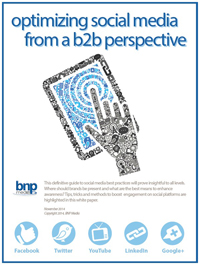The 2011 ASIS show was enjoyable as I explored new solutions and mingled with old friends. A number of consistent trends continue to impact global security in new ways as improved network bandwidth drives “big data” sets, requiring better situational awareness prior to downloading to intelligent mobile devices; securing those mobile end points is another matter for a future article.
This process is placing more focus on individual experience in analyzing specific data around behavior. Nirvana for security policy in the private sector, or law enforcement and intelligence agencies in the public space, is “predictive” analysis or, to be politically correct, “behavioral profiling.” I believe this is where the industry will drive existing physical security information management (PSIM) software in the future.
Integrating predictive behavior modeling based on human experience can complement the current capabilities where PSIM excels. This will entail extending integrations to multiple databases and new solutions.
For example, the fact that retailers can predetermine customer-buying behavior based on weather reporting and police can predict crime patterns using statistical analysis bodes well for behavior profiling based on social media. Our digital footprints are as predictive in cyberspace as our product purchasing or crime patterns are in the physical realm.
The ability to leverage big data sets containing both structured and unstructured information, such as credit card records, Facebook/LinkedIn profiles, websites, friends of friends, etc., creates the linkages to combine with advanced software and human experience to profile and predict behavior. This may all sound a bit like the science fiction movie “Minority Report,” however the security industry should take notice. A predictive analysis solution via behavior modeling, and human intuition, is a force multiplier for a law enforcement agency, as well as a competitive differentiator for a commercial firm that uses it in a product marketing strategy. Dual use technologies are flexible and cost effective.
One interesting firm attending ASIS was 3iMIND (www.3imind.com). I discovered them at the show demonstrating security solutions integrating numerous open sources of intelligence. It is the first solution I have seen that leverages operational experience and human intuition into security convergence with a HUMINT (human intelligence) module. It was an “all data, all the time” approach applicable to fusion centers, corporations, and/or individuals alike. It looks to me like the future of security will integrate social networks more tightly.
“Monitoring threats and securing critical assets in the 21st century require the creation of high-quality, reliable, situation-specific intelligence — 24/7,” said Chris Wooten, chief sales officer at 3i-MIND. “Neither sophisticated technology nor human expertise alone is sufficient to deal with today’s threats. Crime and other disruptive activities are planned and carried out on social networks and in other public forums online; as a result, risk reduction and avoidance require a combination of open-source tools and subject matter expertise. Without one or the other, security officers and their teams lose the upper hand.”
As the security industry continues to converge, and situational awareness solutions improve, many of the vendors attending ASIS 2011 will need to partner to provide solutions that are innovative and cost effective. The fact is that the security industry is getting more complex as global crime is exploding. The more that social behavior — physical and digital — can be profiled to predict crime patterns, the better.
The ASIS show is changing. The future of the security industry is about analyzing all sources of information, including human networks — social media — and technology platforms — video and sensors — to secure an environment against crime and disasters, man-made or otherwise. Security convergence is working across social media.









